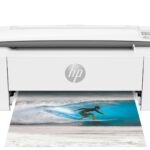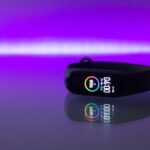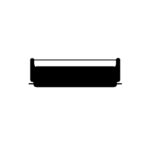Greeting cards have been a popular way to express emotions for a long time. Creating and printing custom greeting cards has become easier than ever with online tools. Personalized greeting cards let you add your own touch for any occasion, like birthdays, holidays, and more.
Several online platforms, like Canva and Shutterfly, offer a variety of options. You can choose from different paper stocks, sizes, and shapes. Some services even allow you to print a different design on every card for free. These tools make it simple to create beautiful and unique cards that stand out.
Ordering printed greeting cards online also offers flexibility and convenience. Services like PrintPlace and Printify provide fast shipping and multiple customization choices. Whether you are making a card for a wedding, a holiday, or a special event, these platforms can help you get the job done quickly and well.
Factors Influencing Energy Consumption
Several factors play a role in how much power a 3D printer uses:
- Printer Size: Larger printers with bigger build volumes and more powerful components generally consume more electricity than smaller desktop models.
- Heated Bed and Nozzle: The temperature and duration of heating for the print bed and nozzle significantly impact energy usage.
- Filament Type: Different filaments require varying temperatures for melting and extrusion, affecting energy consumption.
- Print Settings: Settings like layer height, print speed, and infill density can influence the duration of printing and thus energy usage.
- Cooling Fans: The use of cooling fans for the printed object and electronics adds to the overall energy consumption.
Typical Energy Consumption
The average energy consumption of a 3D printer varies depending on the model and usage. Here’s a general idea:
| Printer Type | Typical Power Usage (Watts) |
|---|---|
| Small Desktop | 50 – 150 |
| Medium Desktop | 150 – 300 |
| Large Desktop/Prosumer | 300 – 500 |
| Industrial | 500+ |
It’s important to note that this is just an estimation, and actual consumption may vary. You can find the specific power rating of your 3D printer in its documentation or specifications.
Do 3D Printers Use a Lot of Electricity?
Compared to other household appliances, 3D printers generally have moderate energy consumption. They use less power than devices like refrigerators, ovens, or air conditioners. However, their energy usage can still contribute to your electricity bill, especially with frequent or prolonged use.
To put it into perspective, a typical desktop 3D printer running for 10 hours might consume around 0.5 to 1.5 kilowatt-hours (kWh) of electricity. This is roughly equivalent to running a few light bulbs for the same duration.
Reducing Energy Consumption
If you’re concerned about the energy usage of your 3D printer, there are several steps you can take to reduce it:
- Optimize Print Settings: Use efficient settings like lower print speeds and reduced infill density when possible.
- Turn Off When Not in Use: Don’t leave your printer on standby for extended periods. Turn it off completely when not in use.
- Choose Energy-Efficient Filaments: Some filaments require lower temperatures for printing, which can save energy.
- Insulate the Print Bed: Adding insulation to the print bed can help maintain heat and reduce energy consumption.
By being mindful of your usage and adopting energy-saving practices, you can minimize the environmental impact and cost of operating your 3D printer.
Key Takeaways
- Custom greeting cards are great for personalizing any occasion.
- Online tools offer many design and customization options.
- Printed cards can be ordered easily and shipped quickly.
Design and Customization
Creating a personalized greeting card involves selecting the right template and graphics, using personalization features, and utilizing design tools and software. This allows for a unique and meaningful card that reflects the sender’s style.
Choosing the Right Template and Graphics
Selecting the right template sets the tone for the card. Many platforms, like Canva, offer a variety of templates. These range from simple and elegant to colorful and fun. When choosing a template, consider the occasion and the recipient.
Graphics and images are crucial. High-quality images or photos add a personal touch. Platforms often provide stock images, but adding personal photos can make the card more special. Carefully chosen graphics can highlight the theme of the card and make it stand out.
Personalization Features
Adding personal elements makes a card unique. Most platforms allow customization of text, colors, and images. You can write your own messages or use suggested texts. Changing the font style and size helps fit the card’s theme.
Adding a signature, either typed or scanned, offers a personal touch. Some services let users add stickers or other design elements to enhance the card. Personalization features are key for creating a card that feels one-of-a-kind.
Design Tools and Software
Various design tools help in creating custom cards. Canva and Shutterfly offer online design tools that are user-friendly. These platforms provide drag-and-drop features for easy design.
Software like Creatacard provides more advanced options. Users can adjust layers, add filters, and create intricate designs. These tools enable anyone to design professional-looking cards without needing expert skills.
Printing and Sharing
Printing and sharing greeting cards involves selecting the right printing options, deciding on the mode of distribution, and considering the environmental impact of your choices. Each step plays a crucial role in delivering a personal and memorable card.
Printing Options
When printing greeting cards, you can choose from various paper types and finishes. For instance, glossy and matte papers are popular. Glossy paper gives a shiny look, while matte paper has no glare. Silk laminated finishes provide a smooth texture and added durability.
Sizes such as 4.25″ x 6″ and 5″ x 6.875″ are common. These sizes are convenient for both production and shipping. Many printers offer different card stocks, including 14 pt. and 16 pt. cardstock, which vary in thickness. Options for folding styles and pre-scored cards make it easier to create professional-looking cards.
Digital and Physical Distribution
Greeting cards can be shared in both physical and digital formats. You can print your cards at home or order bulk prints from services like Printify and Canva. This allows you to send cards via snail mail for a personal touch. Including a signature adds to the personal feel.
For quicker sharing, digital cards are an excellent choice. Design your card online and share it via email, social media platforms like Facebook, or through a preferred messaging app. Some services, such as Blue Mountain, also allow you to add photos and videos to your digital cards.
Environmental Considerations
When printing greeting cards, sustainability is crucial. Use papers that are certified by environmental organizations and consider recycled paper options. Some companies even offer the choice of planting a tree for each order, which helps to balance out the paper used.
Minimize waste by choosing services that offer eco-friendly inks and materials. Digital cards are also an environmentally friendly option, as they don’t require physical resources or shipping. By being mindful of these choices, you contribute to reducing your environmental footprint while still sending thoughtful greetings to your loved ones.
Frequently Asked Questions
Learn how to print your own greeting cards, the costs involved, the best methods for printing online, and more.
How do you print your own greeting cards?
To print your own greeting cards, you can use a professional printing service or do it at home. Professional services offer more options for customization and paper quality. If printing at home, you need a computer, a printer, and good-quality paper.
How much does it cost to print a greeting card?
The cost to print a greeting card varies. Professional printing services may charge between $1 to $3 per card, depending on the paper and design options. Printing at home can reduce costs, but you’ll need to buy good paper and ink.
What are the best methods for printing custom greeting cards online?
Popular methods for printing custom greeting cards online include using services like Printify and Greenerprinter. These services offer various paper options, design tools, and bulk ordering discounts. They provide high-quality results and a lot of choices for customization.
Can I print greeting cards at home, and if so, what do I need?
Yes, you can print greeting cards at home. You will need a computer with a design program, a printer capable of high-quality prints, and good card stock paper. Using heavier paper ensures the cards feel professional and durable.
How can I make my own greeting cards for free?
You can make greeting cards for free using online design tools like Canva. These tools offer free templates and design elements. Once you’ve designed your card, you can print it at home or save the file to share electronically.
What type of printer is recommended for printing high-quality greeting cards?
For high-quality greeting cards, an inkjet printer with good photo capabilities is recommended. These printers handle color and detail well. Look for printers with a high DPI (dots per inch) rating and the ability to print on heavier paper.







